ما هي الأنواع الأربعة الأساسية للعروض؟
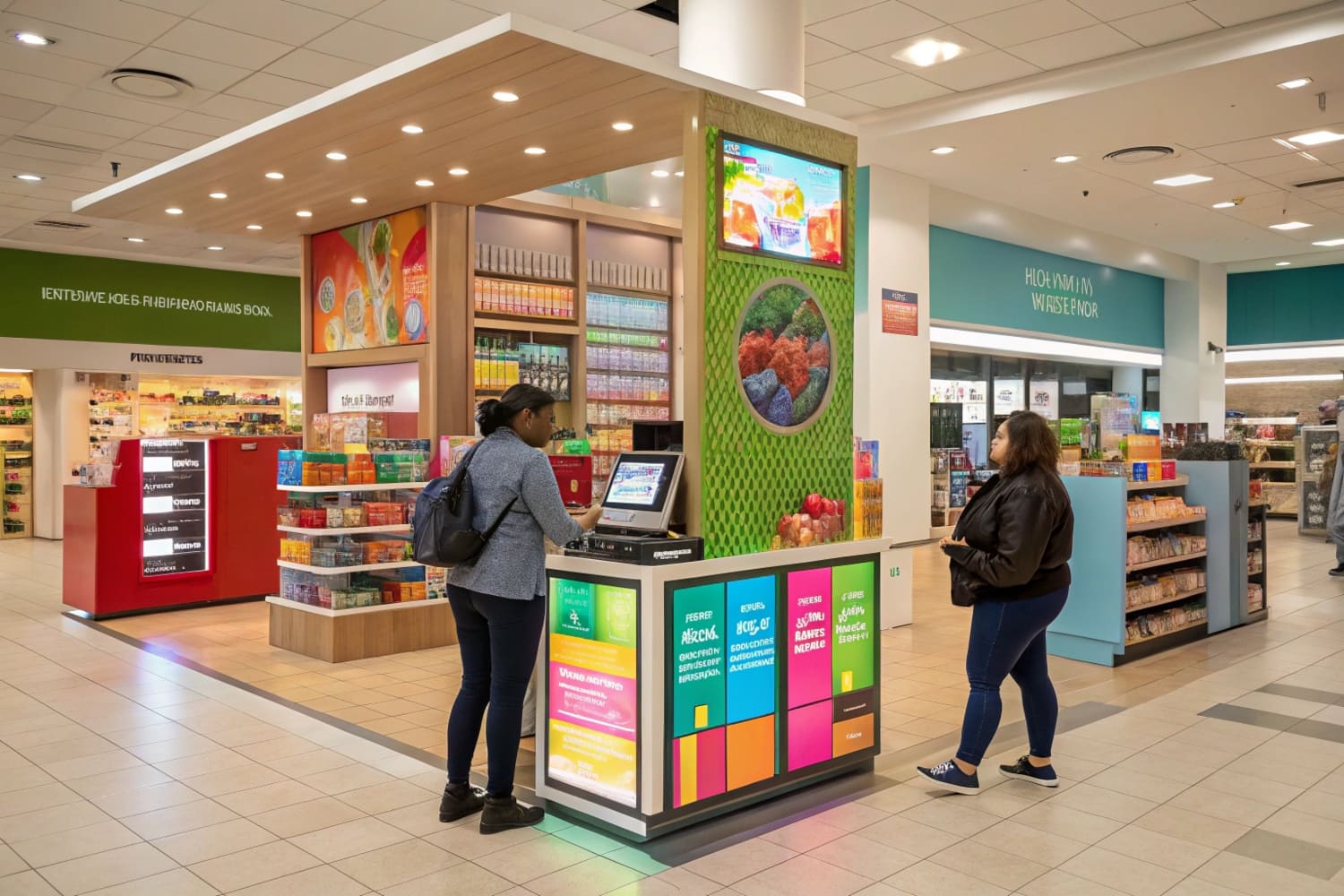
في عالم البيع بالتجزئة اليوم ، تعد العروض الفعالة مفتاحًا لجذب العملاء وتعزيز تجربة التسوق. إذا كنت تفكر في تصميم عرض لعملك ، فإن فهم الأنواع المختلفة أمر ضروري.
هناك أربعة أنواع رئيسية من العروض المستخدمة في بيئات البيع بالتجزئة: العروض الترويجية والمنتج والتفاعلية والرقمية. يقدم كل نوع غرضًا فريدًا في لفت الانتباه وتعزيز مشاركة العملاء.
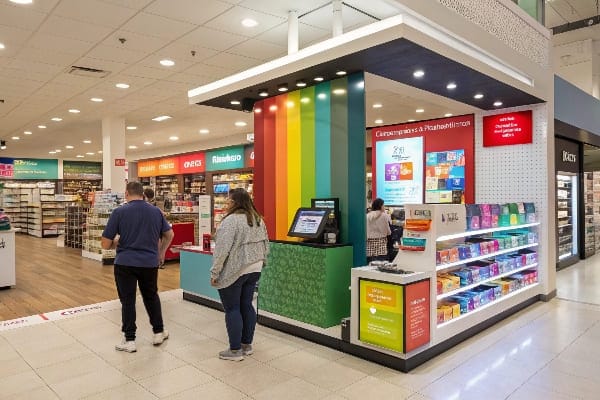
يمكن أن يساعد فهم الغرض المحدد وراء كل نوع عرض الشركات على اختيار أفضل استراتيجية لعرض منتجاتها. دعنا نستكشف هذه الأنواع الأربعة ونغوص في كيفية فعالية كل واحدة في البيع بالتجزئة.
ما هي المكونات الرئيسية الأربعة لجميع عروض الموضة؟
شاشات الأزياء هي شكل فني ، مصمم ليس فقط لعرض الملابس ، ولكن لرواية قصة وجذب الانتباه. ولكن ما الذي يجعل عرض الأزياء فعالا بالضبط؟
المكونات الأربعة الرئيسية لجميع شاشات الأزياء هي الهيكل والإضاءة والدعائم والعارضات. تتجمع هذه العناصر لإنشاء شاشة جذابة وممتعة بشكل جمالي تجذب العملاء.
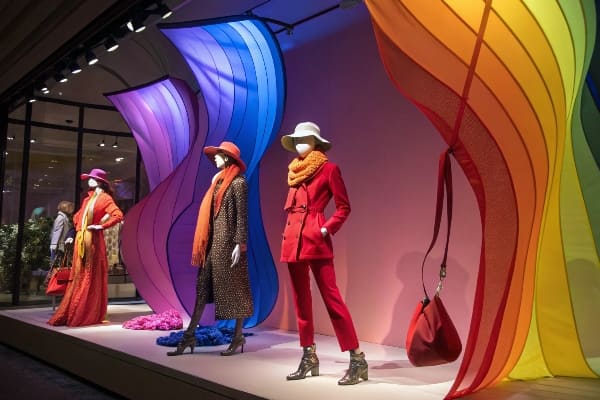
شاشات الموضة 1 طريقة رائعة للتعبير عن الأسلوب والشخصية 2 من العلامة التجارية. ولكن كيف نختار المكونات المناسبة لإنشاء فعال 3 ؟ دعنا نتفكك كل عنصر.
بناء
يشير الهيكل إلى الإعداد المادي للعرض. يمكن أن يكون طاولة أو رف أو جدار يبرز الملابس. يجب ترتيب التصميم بطريقة تدعو العملاء إلى استكشاف العناصر ، مع مساحة واسعة وسهولة الوصول.
إضاءة
للإضاءة 4 تغيير شعور الشاشة بشكل كبير. تبرز الإضاءة المناسبة العناصر الرئيسية ويمكنها إنشاء مزاج يتردد صداها مع جمالية العلامة التجارية. بالنسبة إلى شاشات الأزياء ، يتم استخدام الإضاءة لإبراز قوام القماش والألوان ، مما يجعل المنتجات تبدو أكثر جاذبية.
الدعائم
الدعائم 5 هي الكائنات المستخدمة لتعزيز الشاشة. في شاشات الأزياء ، يمكن أن تشمل الدعائم ملحقات مثل القبعات أو الحقائب أو الأحذية. تساعد هذه الدعائم في إكمال المظهر وتوفير السياق ، مما يساعد العملاء على تخيل كيفية ارتداء العناصر في الحياة الحقيقية.
العارضات
العارضات 6 ضرورية في عروض الموضة. يوضحون للعملاء كيف تناسب الملابس ويمكن تصميمها. بعض العارضات هي جسم كامل ، في حين أن البعض الآخر قد يعرض الجزء العلوي من الجسم فقط ، اعتمادًا على هدف العرض.
كم عدد أنواع العروض الموجودة؟
العروض تأتي في العديد من الأشكال والأحجام. ولكن كم عدد الأنواع الموجودة ، وكيف تختلف عن بعضها البعض؟
هناك عمومًا خمسة أنواع من الشاشات: عروض النوافذ ، وعروض نقطة الشراء ، والعروض التفاعلية ، والعروض الرقمية ، والعروض الترويجية. يخدم كل وظيفة فريدة من نوعها في عرض المنتجات وخلق اهتمام العملاء.
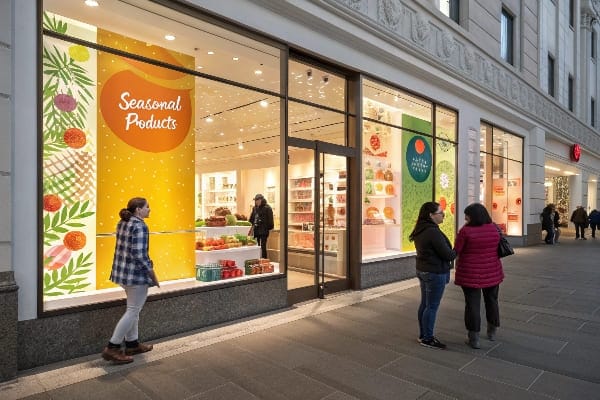
استخدام جميع أنواع العرض 7 إعدادات البيع بالتجزئة 8 ، من المهم معرفة أي شخص سيعمل بشكل أفضل لمنتجك 9 . دعنا نذهب من خلال كل نوع بمزيد من التفاصيل.
عروض النافذة10
عروض النوافذ هي أول ما يراه العملاء عند الاقتراب من المتجر. تهدف هذه العروض إلى لفت الانتباه وإغراء العملاء المحتملين للدخول. مفتاح عرض النافذة الناجح هو الإبداع ، باستخدام الإضاءة والدعائم والعناصر المرئية التي تنشئ قصة حول المنتجات.
تعرض نقطة الشراء
يتم وضع شاشات عرض نقطة الشراء بشكل استراتيجي بالقرب من عدادات الخروج أو المناطق ذات العبور العالية لتشجيع عمليات شراء الدافع في اللحظة الأخيرة. تتميز هذه العروض عادة عناصر أصغر وأكثر بأسعار معقولة ، مثل الوجبات الخفيفة أو المجلات أو المنتجات بحجم السفر.
عروض تفاعلية11
تتيح شاشات العرض التفاعلية للعملاء الانخراط مباشرة مع المنتج ، إما من خلال الشاشة التي تعمل باللمس أو عروض المنتجات أو حتى المحاولات الافتراضية. هذا النوع من العرض مثالي للتكنولوجيا أو منتجات التجميل حيث تكون التجربة العملية ضرورية.
شاشات رقمية12
تستخدم الشاشات الرقمية الشاشات الإلكترونية لعرض مقاطع الفيديو أو الرسوم المتحركة أو الإعلانات. هذه العروض متعددة الاستخدامات للغاية ويمكنها تغيير محتواها بسرعة ، مما يوفر المرونة في حملات التسويق.
عروض ترويجية
الشاشات الترويجية هي إعدادات مؤقتة مصممة لتسليط الضوء على المبيعات أو العروض الخاصة. عادة ما يتم استخدامها خلال الفترات الترويجية ويمكن وضعها في جميع أنحاء المتجر أو في Windows لجذب الانتباه.
ما هي العناصر الأربعة للترويج البصري؟
الترويج المرئي هو فن وعلم لتقديم المنتجات بطريقة تشجع تفاعل العملاء وشرائها. ولكن ما هي بالضبط العناصر الرئيسية للترويج البصري الفعال؟
العناصر الأربعة للترويج البصري هي المنتج والسعر والمكان والترويج. تعمل هذه العناصر معًا لإنشاء تجربة تسوق سلسة تغري العملاء على الشراء.
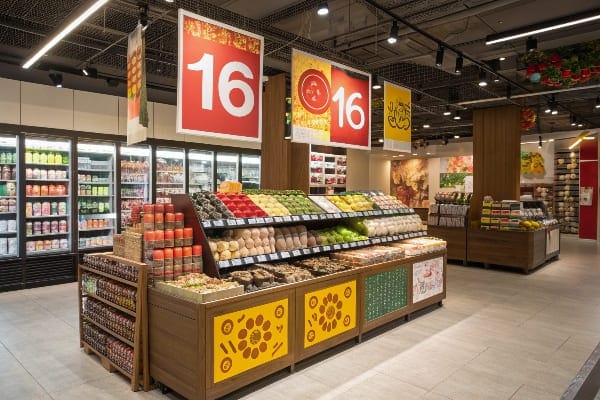
في الترويج المرئي 13 ، يعد موازنة هذه العناصر الأربعة أمرًا بالغ الأهمية لإنشاء عرض فعال 14 . دعونا نلقي نظرة فاحصة على كيفية مساهمة كل واحد في النجاح الكلي 15 .
منتج
المنتج هو محور أي شاشة. من الضروري تقديم المنتج بطريقة تبرز أفضل ميزاته. سواء كان ذلك عنصرًا أو أداة أو ديكور منزلي ، يجب أن يكون المنتج مرئيًا بشكل واضح ويمكن الوصول إليه بسهولة للعملاء للتفاعل معه.
سعر
يجب أن تكون علامات الأسعار واضحة وسهلة القراءة. يقدّر العملاء الشفافية ، لذلك من الضروري ضمان أن السعر متخلف جيدًا ، خاصة بالنسبة للعناصر الترويجية أو المخفضة.
مكان
يشير المكان إلى موقع الشاشة داخل المتجر. يجب وضع الشاشة حيث يلاحظ العملاء ذلك ، ويفضل أن يكون بالقرب من المناطق ذات الحركة العالية. الموضع الاستراتيجي يزيد من الرؤية ويشجع التفاعل مع المنتجات.
ترقية
يشير الترويج إلى العروض الخاصة أو الخصومات أو أحداث المبيعات المعروضة في الشاشة. يمكن أن يشمل ذلك العروض المحدودة للوقت أو "شراء واحد ، واحصل على عروض واحدة مجانية". يمكن أن يؤدي الترويج لهذه الصفقات بفعالية إلى زيادة المبيعات وجذب المزيد من العملاء إلى المتجر.
ما هي الأنواع المختلفة من إعدادات العرض؟
في البيع بالتجزئة ، يلعب الإعداد الذي يتم فيه إعداد العرض دورًا رئيسيًا في مدى فعاليته. تحتاج البيئة إلى استكمال المنتج ، وتقديم الأجواء الصحيحة وتجربة العملاء. ولكن ما هي الأنواع المختلفة من إعدادات العرض ، وكيف تختلف؟
الأنواع الأربعة الرئيسية لإعدادات العرض هي شاشات بيئية ، تركز على المنتجات ، قائمة على السمات ، ونمط الحياة. يقدم كل إعداد نهجًا مختلفًا لعرض المنتجات والمشاركة مع العملاء.
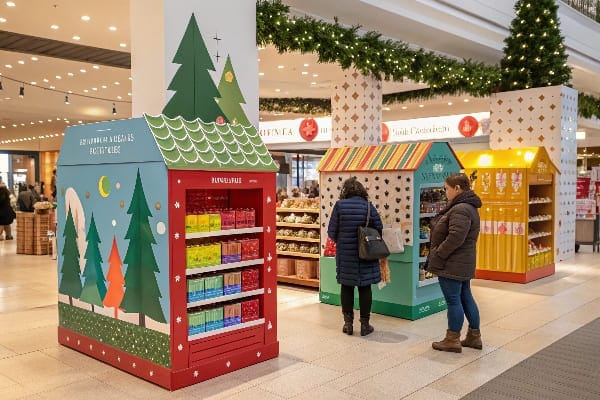
كل إعداد عرض له نقاط القوة الخاصة به. يمكن أن يساعدك فهم هذه الإعدادات على إنشاء نهج مخصص لعرض منتجاتك.
عروض بيئية16
تستخدم العروض البيئية عناصر المساحة المحيطة لإنشاء جو. غالبًا ما تتضمن هذه العروض الطبيعة أو الطقس أو الموسم في عرض المنتجات. وهي مصممة لجعل العملاء يشعرون بالانغماس في قصة المنتج.
شاشات تركز على المنتج17
تبرز العروض التي تركز على المنتج المنتج نفسه. الهدف من ذلك هو التأكد من أن انتباه العملاء على المنتج بالكامل ، مع الحد الأدنى من الانحرافات. غالبًا ما تستخدم هذه العروض خلفيات واضحة أو نغمات محايدة للتأكيد على المنتج.
عروض قائمة على الموضوع
العروض المستندة إلى الموضوع تحكي قصة. سواء كانت عطلة أو حدث أو نمط حياة ، فإن هذه العروض تخلق سردًا حول المنتج. غالبًا ما تتضمن الدعائم والعناصر المرئية لإغراق العملاء في هذا الموضوع ، مما يجعلهم أكثر عرضة للتواصل مع المنتج عاطفياً.
يعرض نمط الحياة18
يركز عرض Lifestyle على كيفية ملاءمة المنتج في حياة العميل. تُظهر هذه العروض المنتج المستخدم في مواقف الحياة الواقعية. على سبيل المثال ، قد تعرض شاشة نمط الحياة لآلة القهوة الماكينة في بيئة المطبخ ، مع أكواب القهوة وأجواء مريحة ، لمساعدة العملاء على تصور استخدامه في منازلهم.
خاتمة
تعتبر العروض الفعالة أمرًا بالغ الأهمية لجذب العملاء وقيادة المبيعات. من خلال فهم الأنواع المختلفة من العروض وكيفية عملها ، يمكن للشركات إنشاء تجارب تجزئة جذابة تشجع عمليات الشراء.
استكشف هذا الرابط لاكتشاف نصائح الخبراء والأفكار المبتكرة لتصميم شاشات الأزياء المؤثرة التي لها صدى لهوية علامتك التجارية. ↩
تعرف على كيفية مواءمة شاشات الأزياء الخاصة بك مع نمط وشخصيتك الفريدة لعلامتك التجارية لمشاركة العملاء بشكل أفضل. ↩
يمكن أن يؤدي فهم العناصر الرئيسية التي تسهم في عرض أزياء فعال إلى تعزيز استراتيجية التجارة البصرية لعلامتك التجارية. ↩
استكشف كيف يمكن أن تعزز الإضاءة شاشات العرض الخاصة بك ، مما يجعل المنتجات أكثر جاذبية ومتماشى مع جمالية علامتك التجارية. ↩
اكتشف أفضل الدعائم لرفع شاشات العرض الخاصة بك ومساعدة العملاء على تصور ملابسهم في الحياة الحقيقية. ↩
تعرف على أنماط عارضة أزياء مختلفة وكيف يمكنها عرض الملابس بشكل فعال وجذب العملاء. ↩
يمكن أن يساعدك فهم أنواع العرض المختلفة في اختيار أفضل ما لمنتجك ، وتعزيز الرؤية والمبيعات. ↩
يمكن أن يوفر استكشاف تأثير أنواع العرض في البيع بالتجزئة نظرة ثاقبة لاستراتيجيات الترويج الفعالة. ↩
إن تعلم كيفية اختيار نوع العرض الصحيح يمكن أن يحسن جاذبية المنتج بشكل كبير ومشاركة العملاء. ↩
استكشف هذا الرابط لاكتشاف التقنيات والأمثلة المبتكرة التي يمكن أن تعزز استراتيجية عرض النافذة. ↩
تعرف على كيفية قيام العروض التفاعلية بتحويل تجارب العملاء وزيادة المبيعات من خلال المشاركة. ↩
اكتشف كيف يمكن أن تحدث عروض رقمية جهود التسويق الخاصة بك من خلال تنوعها وتأثيرها. ↩
استكشف هذا الرابط لاكتشاف الاستراتيجيات والنصائح الأساسية للترويج المرئي الفعال الذي يمكن أن يعزز شاشاتك. ↩
تعلم من الخبراء حول المكونات الرئيسية التي تجعل عرض البيع بالتجزئة فعالًا وجذابًا للعملاء. ↩
يمكن أن يساعدك فهم العوامل التي تؤدي إلى النجاح العام على تحسين استراتيجيات الترويج لتحسين نتائج. ↩
استكشف كيف يمكن أن تعزز العروض البيئية تجربة العملاء ورواية القصص في إعدادات البيع بالتجزئة. ↩
تعرف على كيفية تركز العروض التي تركز على المنتجات على جذب انتباه العملاء بشكل فعال وزيادة المبيعات عن طريق تقليل الانحرافات. ↩
اكتشف تأثير عروض نمط الحياة على مشاركة العملاء والاتصال العاطفي مع المنتجات في استراتيجيات التسويق. ↩



